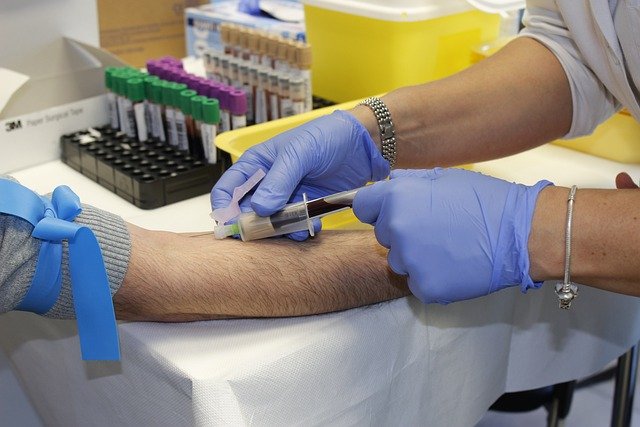Understanding blood tests: What they measure and why they matter
Blood tests are common medical tools that measure cells, chemicals, proteins, hormones and other substances circulating in the bloodstream. They help clinicians evaluate organ function, screen for conditions, monitor chronic disease, and guide treatment decisions. Results are numerical and interpreted in context with symptoms, history, and other tests to form a clearer picture of a person’s health.

This article is for informational purposes only and should not be considered medical advice. Please consult a qualified healthcare professional for personalized guidance and treatment.
What is a blood test and how is it performed?
A blood test involves drawing a sample—usually from a vein in the arm—using a sterile needle and vial or syringe. The collected sample is sent to a laboratory where technicians analyze components like red and white blood cell counts, hemoglobin, glucose, electrolytes, and liver or kidney enzyme levels. Point-of-care fingerstick tests exist for quick checks, but laboratory venous samples are more comprehensive.
Preparation varies by test: fasting is commonly required for lipid panels or glucose measurements, while medication timing can affect other assays. Results are typically reported as a value with a reference range; deviations prompt further evaluation or repeat testing to confirm trends rather than rely on a single reading.
How does a PSA blood test relate to prostate health?
A PSA (prostate-specific antigen) blood test measures a protein produced by prostate cells. Elevated PSA levels can result from prostate enlargement, inflammation (prostatitis), recent procedures, or prostate cancer. Because PSA can rise for noncancerous reasons, it is not a definitive test for cancer by itself but a marker used alongside physical exams and imaging.
Clinicians consider PSA trends over time, patient age, prostate size, and other risk factors when interpreting results. Shared decision-making is common for PSA screening: discussing potential benefits and harms with a healthcare professional helps determine if testing is appropriate for an individual’s situation and risk profile.
Can blood tests help detect cancer?
Certain blood tests can indicate the possibility of cancer, though most are not diagnostic on their own. Markers such as PSA for prostate, CA-125 for ovarian, AFP for liver or testicular tumors, and others may suggest malignancy when elevated. Complete blood count abnormalities can also point to blood cancers like leukemia or lymphoma. However, false positives and false negatives are possible, so abnormal markers typically prompt imaging, biopsy, or specialist referral for definitive diagnosis.
Routine blood tests may detect patterns that warrant further investigation—unexplained anemia, persistent inflammatory markers, or abnormal liver function tests can be early clues. Screening strategies and which tests to use depend on age, symptoms, family history, and established clinical guidelines.
How to interpret blood test results for overall health?
Interpreting results requires context: a single value outside the reference range does not automatically indicate disease. Reference ranges reflect values found in a healthy population but may vary by laboratory, method, age, sex, and ethnicity. Trends across multiple tests, symptom correlation, and medical history are essential for meaningful interpretation.
When reviewing results, ask whether values are mildly, moderately, or significantly abnormal and whether prior tests show a pattern. Some findings need urgent attention (severe electrolyte imbalances, acute kidney injury), while others can be monitored or repeated to rule out lab error. Discussing results with a clinician or a local services laboratory specialist helps translate numbers into actionable health information.
What to prepare for a blood test in your area?
Before a blood test, check whether fasting is required and which medications or supplements should be paused. Bring identification, a medication list, and any lab orders. If needle anxiety is a concern, wear loose sleeves, stay hydrated, and inform phlebotomy staff—many local services accommodate preferences such as smaller needles or seated draws.
If you need to find testing options in your area, contact primary care clinics, hospitals, community health centers, or private laboratories to compare availability and specimen handling practices. For specialized tests like PSA or tumor markers, confirm that the chosen lab uses standardized assays and provides clear reference ranges on the report.
Conclusion
Blood tests are versatile tools that contribute important information about organ function, disease presence, and treatment effects. Tests such as PSA can inform prostate health assessment, while other markers may raise suspicion for cancer or signal broader health concerns. Accurate interpretation depends on clinical context, repeat measures when appropriate, and discussion with a qualified healthcare professional to determine next steps and monitoring strategies.





